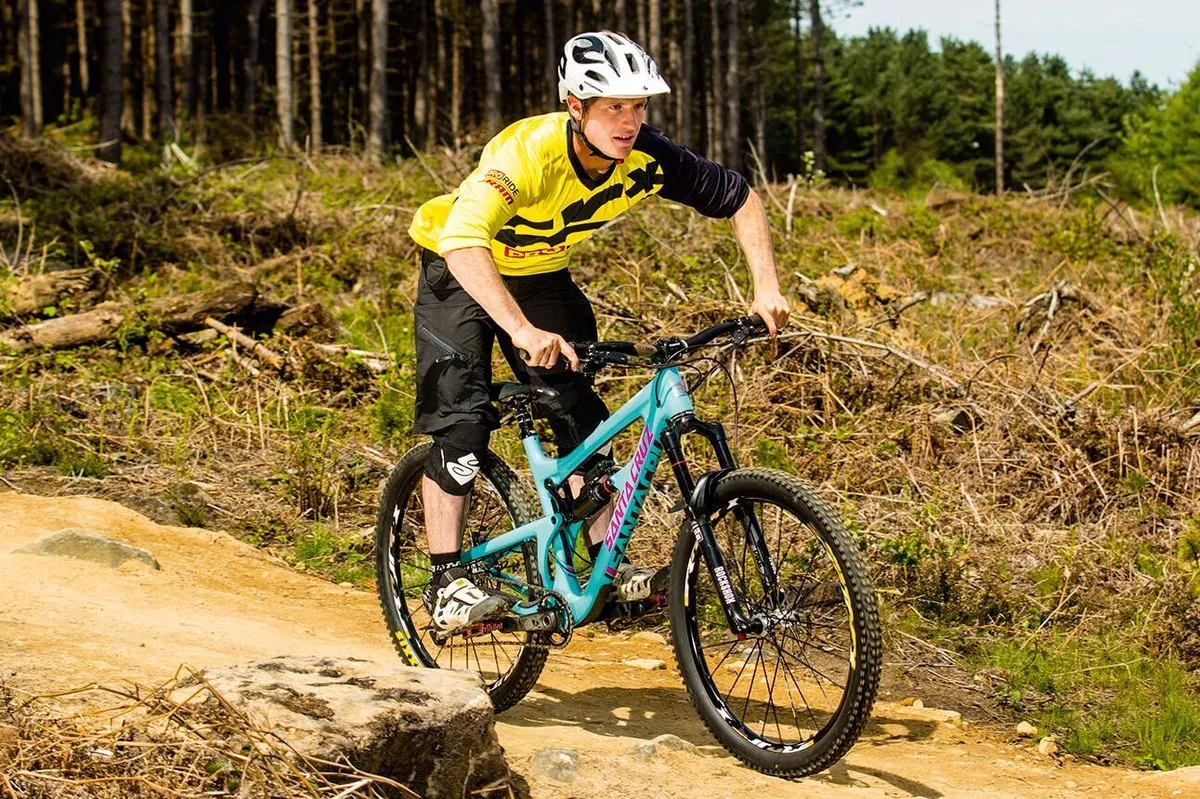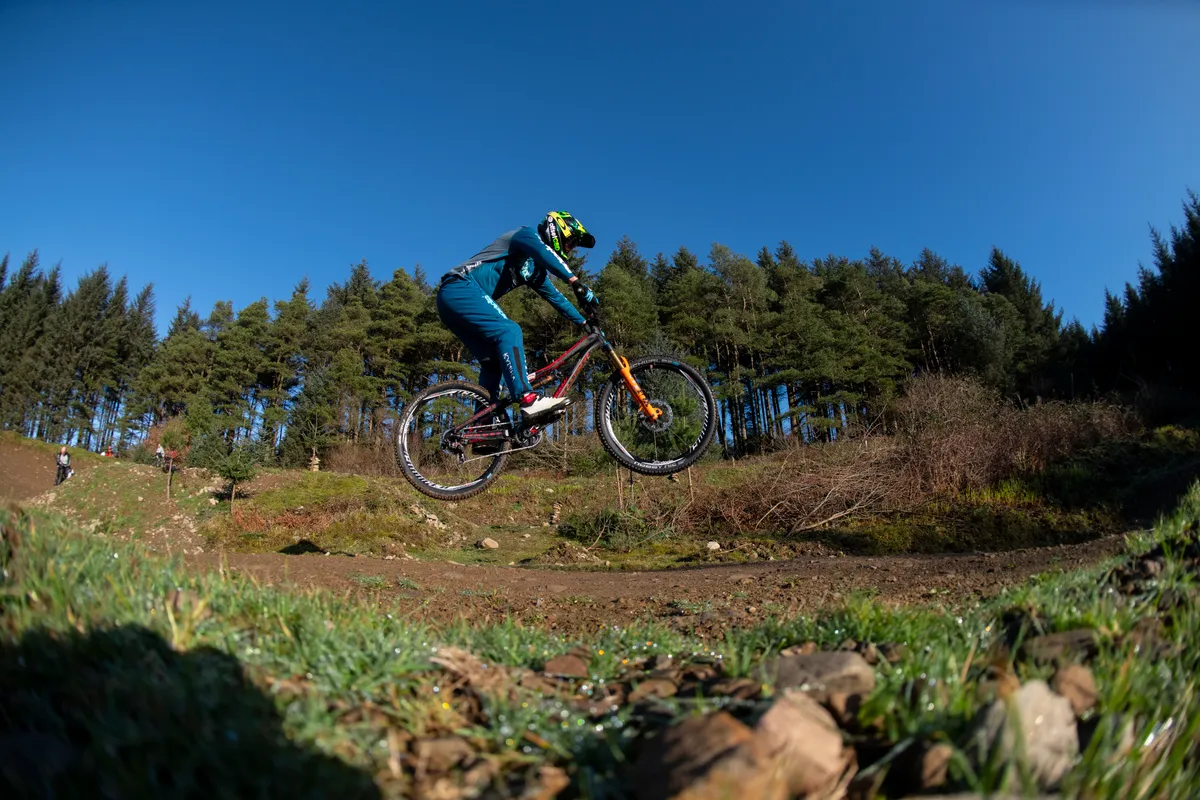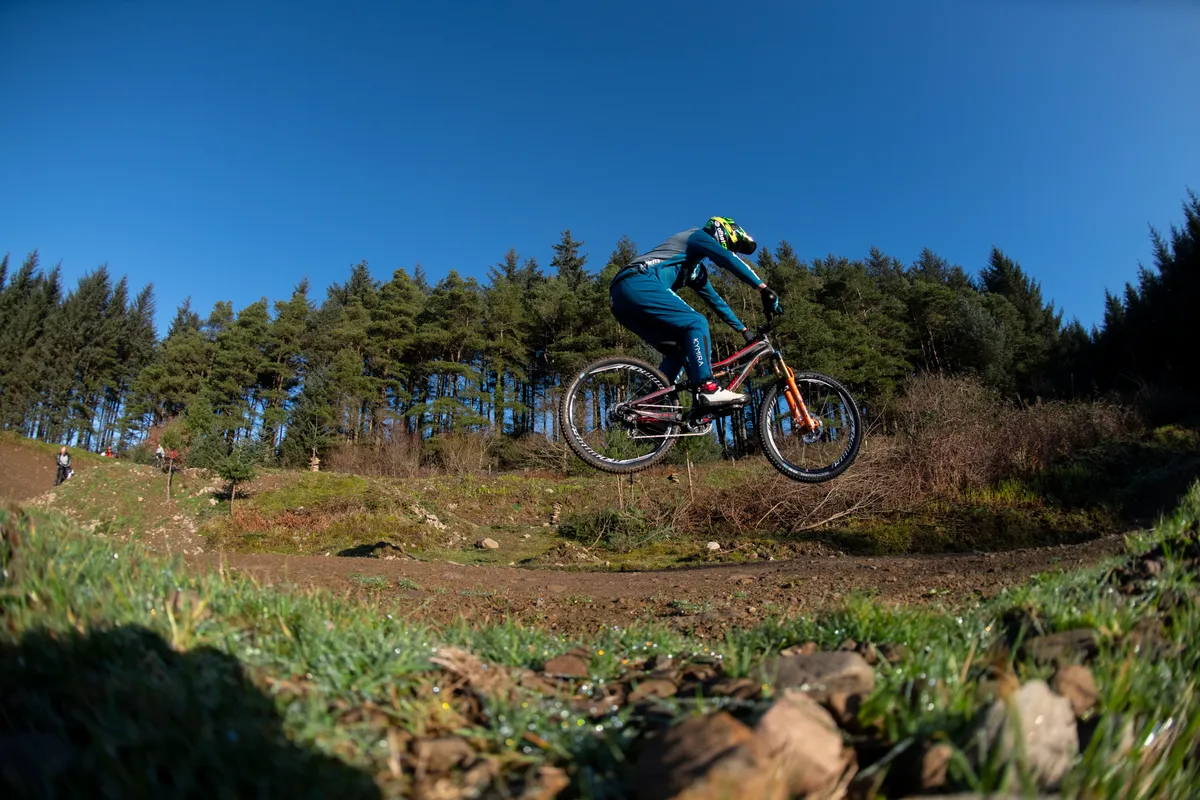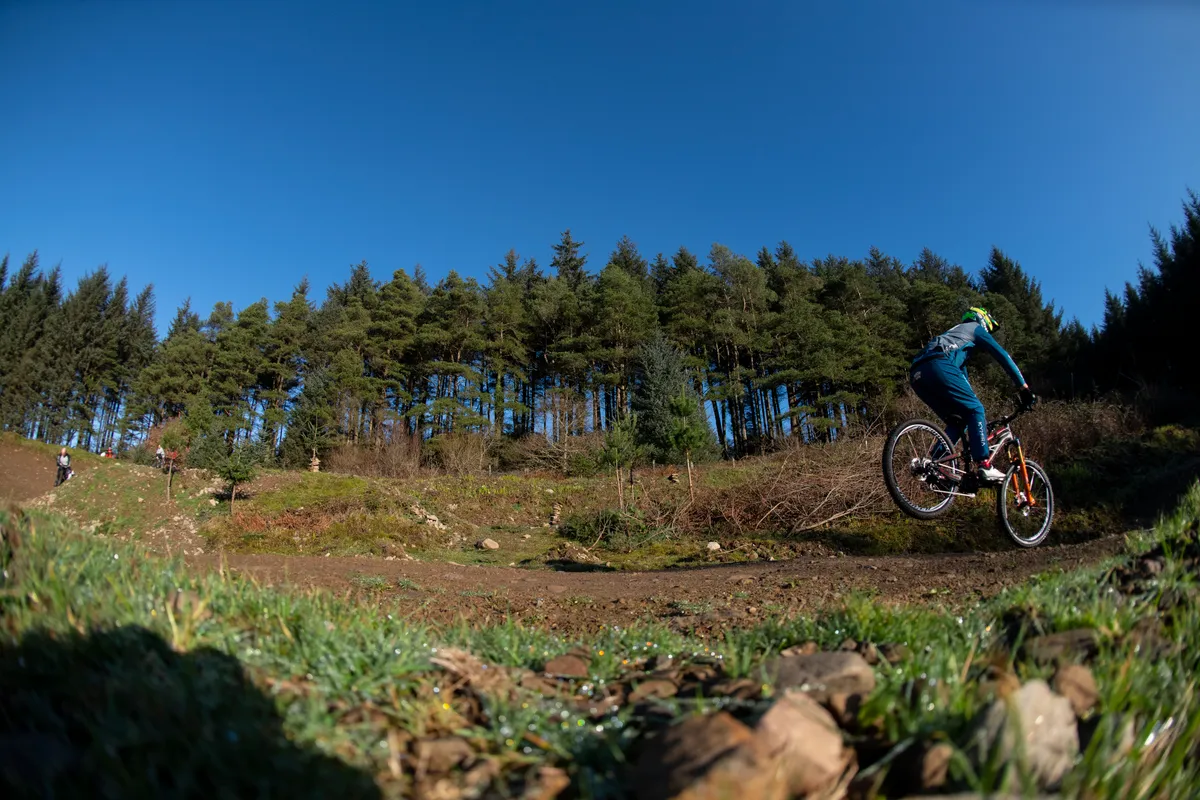The bunny hop is a useful mountain biking skill that can get you out of trouble, keep you moving forwards at speed and help you clear big jumps better.
The technique is also the foundation of learning how to jump, and will enable you to get airborne from features along the trail.
In this guide, we’ll explain how to pull off the smoothest, highest and most controlled hop.
A bunny hop can be performed on any bike with flat or clipless pedals.
How to bunny hop on a bike
Sometimes called the 'American bunny hop', bunny hopping involves getting the front wheel up first, then springing up and 'scooping' the rear wheel behind you (similar to an ollie on a skateboard).
It takes plenty of practice to perfect, but is a skill that all riders will benefit from learning.
The so-called 'English bunny hop' relies on using your clipless pedals to pull up both front and rear wheels simultaneously.
While this is a useful technique for jumping small obstacles on the trail, we're going to focus here on learning the former, which can be done with either clipless or flat pedals. While it takes a little extra practice, it's much more effective.
1. Practise the pumped manual

The first and most important thing to master is the pumped manual.
To start, coast at a steady pace with your cranks level and your forearms low. This position is usually referred to as the attack position.
Compress your suspension by quickly sinking your body and hips into the bike. This short burst of energy will prime your suspension, ready for it to spring the front end into the air.
To get the front wheel off the ground, shift your weight over the rear wheel before the suspension springs back up.
It's best to practise this technique with as little bar pull as possible, because it should be the movement of your hips rather than your arms that gets the front end up.
When you get comfortable with this, try compressing the suspension harder and pulling the bars back. This will add more boost to your manual – and in time, will lead to a higher bunny hop.
2. Stand tall

Once you've perfected the pumped manual, it's time to take to the sky.
As the front end of your bike rises, move to a standing position on the bike.
This will shift your weight forward, enabling the rear of the bike to leave the ground.
Similar to an ollie on a skateboard, it is the movement of your weight that springs the bike into the air. It's useful to think of the bunny hop as an action performed by you that impacts the bike, rather than an action performed by the bike.
Pulling the handlebars toward your hips will bring the front wheel higher, adding greater leverage to your jump and resulting in more height.
3. Throw the bars forwards

As the front wheel reaches full height, it's time to throw the bars forwards and bring the rear wheel off the ground. Rotating your bars forwards by twisting them will give you more control when bringing the rear wheel off the ground.
Timing this action so you aren't throwing the bars into the ground can be tricky, so try to picture the arc of the jump and push the bars slightly upwards to compensate.
The further you throw your bars, the further your jump will be.
4. Scoop upwards with your feet

To bring the rear wheel to the same level as the front, you need to scoop the pedals upwards with your feet, while bending your legs to absorb the bike into your body.
When practising, it pays to move your saddle down to avoid a badly timed whack on the backside.
If you are using clipless pedals, there is less need to scoop because bending your legs should bring the back end up anyway.
The forward thrust on the bars will push the bike out in front of you as it lifts.
How far you travel, and the angle the bike ends up at, depends on lots of factors. How hard you pumped for your manual, how hard you kicked through with your feet, how hard you threw forwards, how quickly you scooped the back end up with your feet, and where you kept your weight will all have had an impact.
5. Learn to control which wheel lands first

Experiment with each of these things and see if you can control which wheel lands first when riding on the flat. You can then take this skill to a drop and try pre-jumping it so both wheels land together on the downslope.
This will mean you spend less time in the air and get a much greater pump down on landing, resulting in greater forwards speed coming out of the jump.
